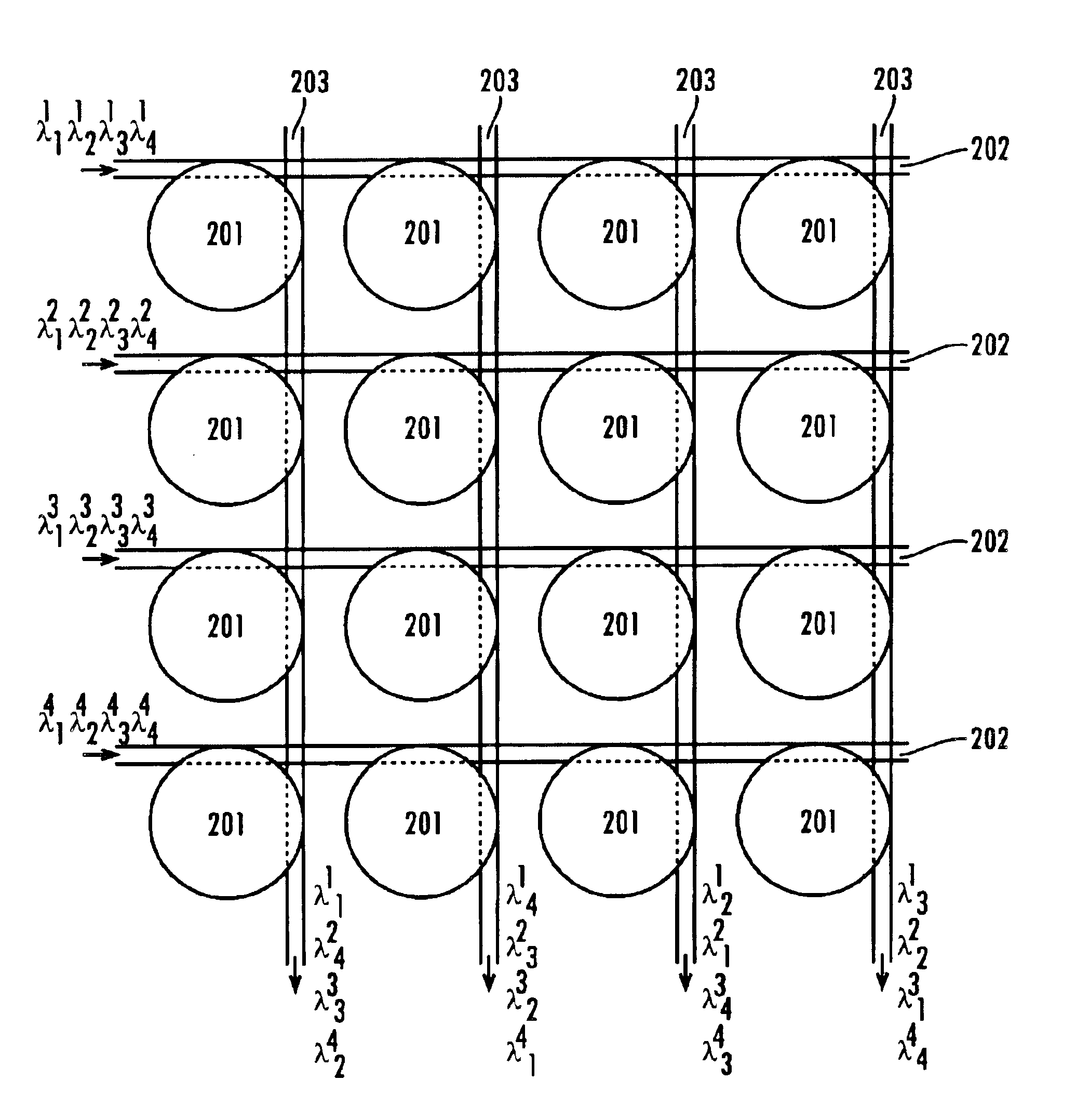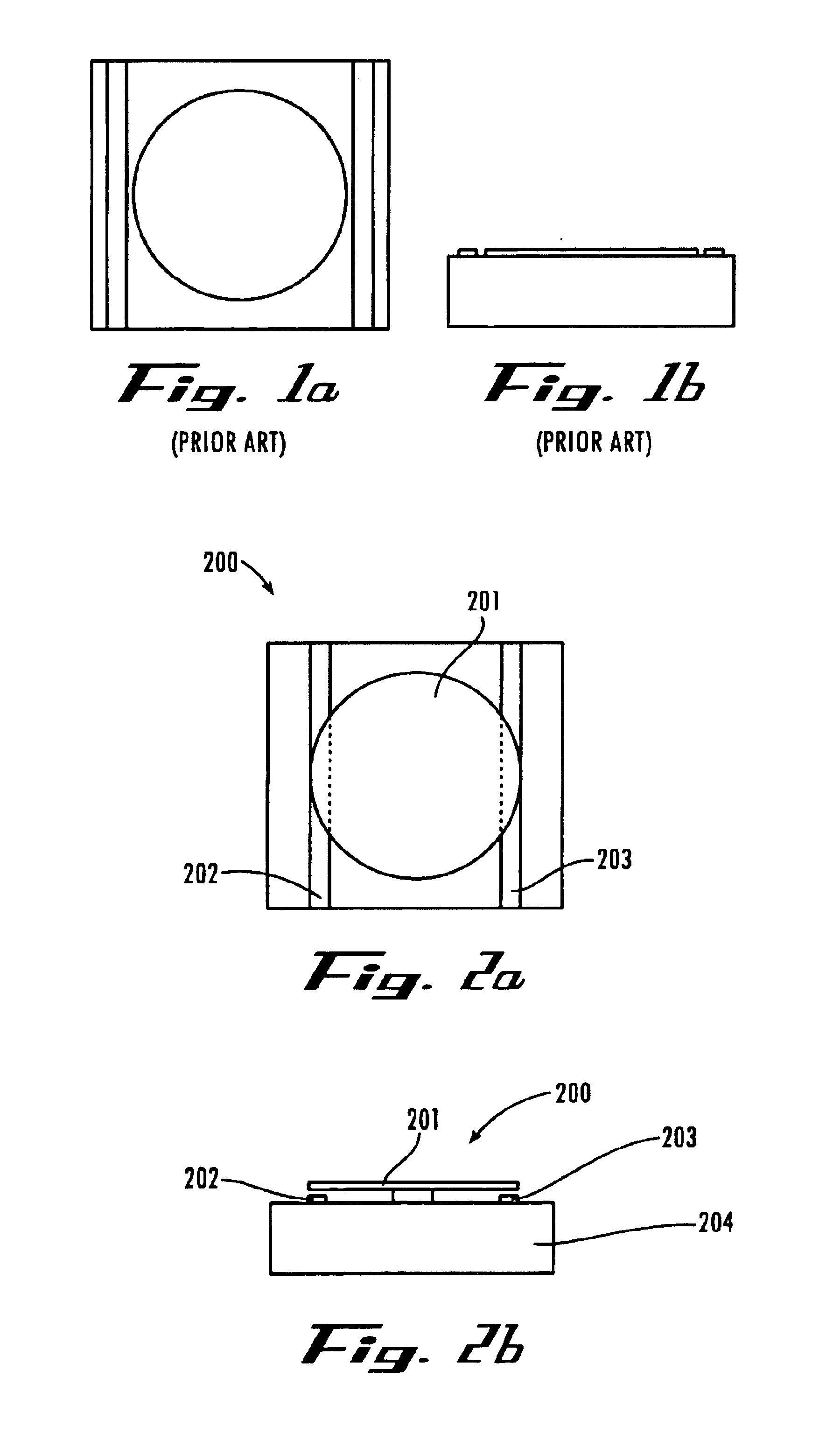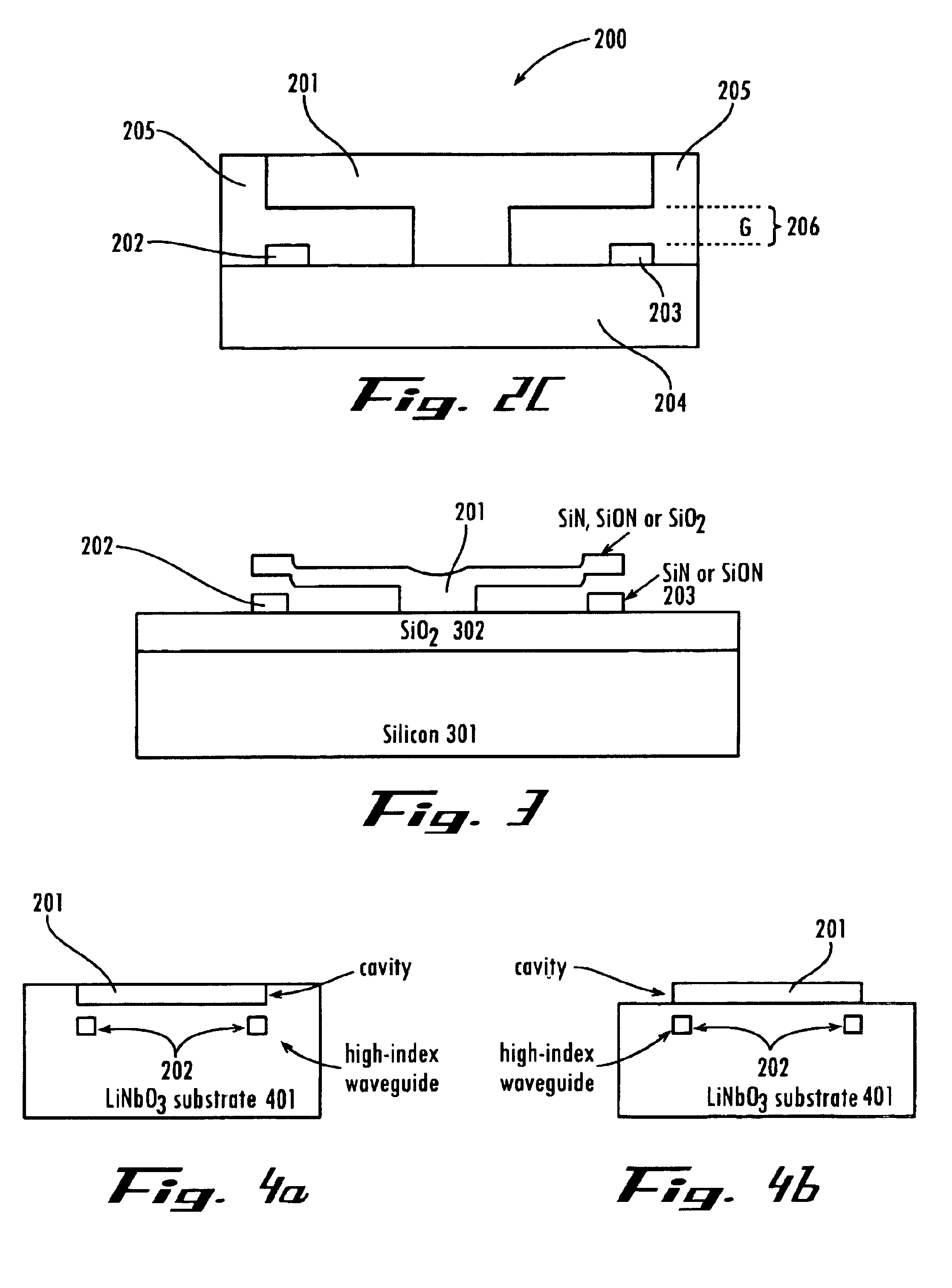Tunable optical wavelength filters and multi-level optical integrated circuits
a wavelength filter and multi-level technology, applied in the field of optical telecommunication network apparatus and methods, can solve the problems of affecting the quality factor, q, of the cavity as well, and it is difficult to maximize the performance of such prior art devices by phase matching the waveguide, and achieves accurate control of the gap size, reduce the horizontal surface area, and improve the coupling efficiency of a tunable resonant optical wavelength filter.
- Summary
- Abstract
- Description
- Claims
- Application Information
AI Technical Summary
Benefits of technology
Problems solved by technology
Method used
Image
Examples
second embodiment
the present invention has the advantages that the resonant cavity 201 may be made in a crystalline material that is electro-optic, while the waveguide 202, 203 structures may be made of a different material in which very low loss waveguides 202, 203 may be fabricated. In addition, the different materials (with different refractive indices) allow greater control over coupling into and out of the resonant cavity 201. Finally, placement of the waveguides 202, 203 on top of the resonant cavity 201 eliminates any bending of the resonant cavity 201, which may result in high resonant cavity 201 losses if planarization were not performed, as described for many embodiments.
Because of the complexity of operations that need to be performed by optical integrated circuits, it is desirable to utilize multiple layers of interconnect (i.e., optical waveguides 202, 203) and devices. The key to fabricating multi-level optical integrated circuits is planarization, a process which must be applied in ad...
PUM
 Login to View More
Login to View More Abstract
Description
Claims
Application Information
 Login to View More
Login to View More - R&D
- Intellectual Property
- Life Sciences
- Materials
- Tech Scout
- Unparalleled Data Quality
- Higher Quality Content
- 60% Fewer Hallucinations
Browse by: Latest US Patents, China's latest patents, Technical Efficacy Thesaurus, Application Domain, Technology Topic, Popular Technical Reports.
© 2025 PatSnap. All rights reserved.Legal|Privacy policy|Modern Slavery Act Transparency Statement|Sitemap|About US| Contact US: help@patsnap.com



